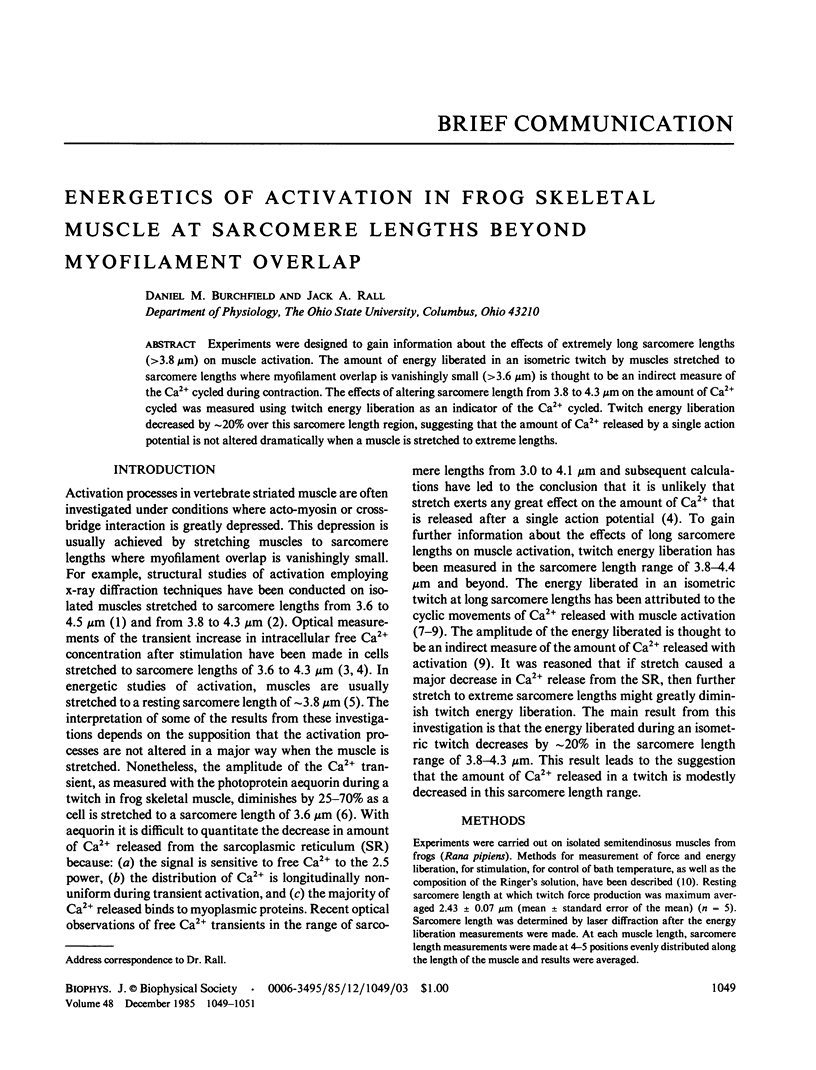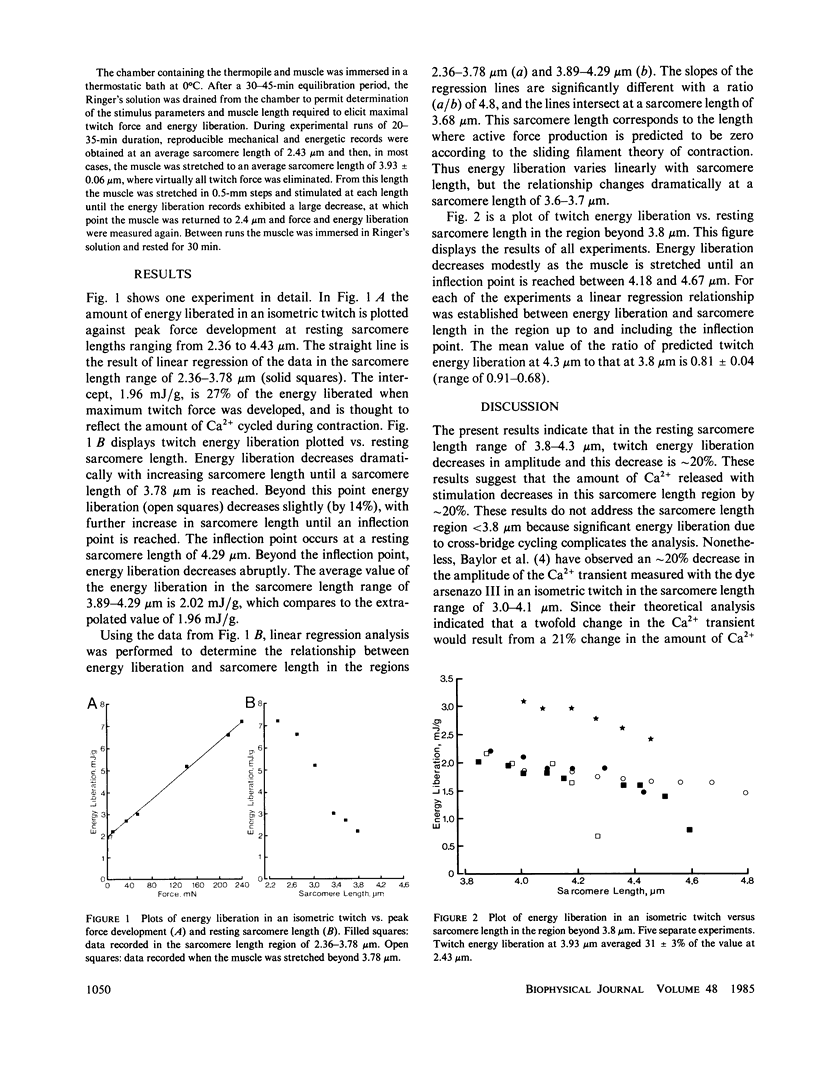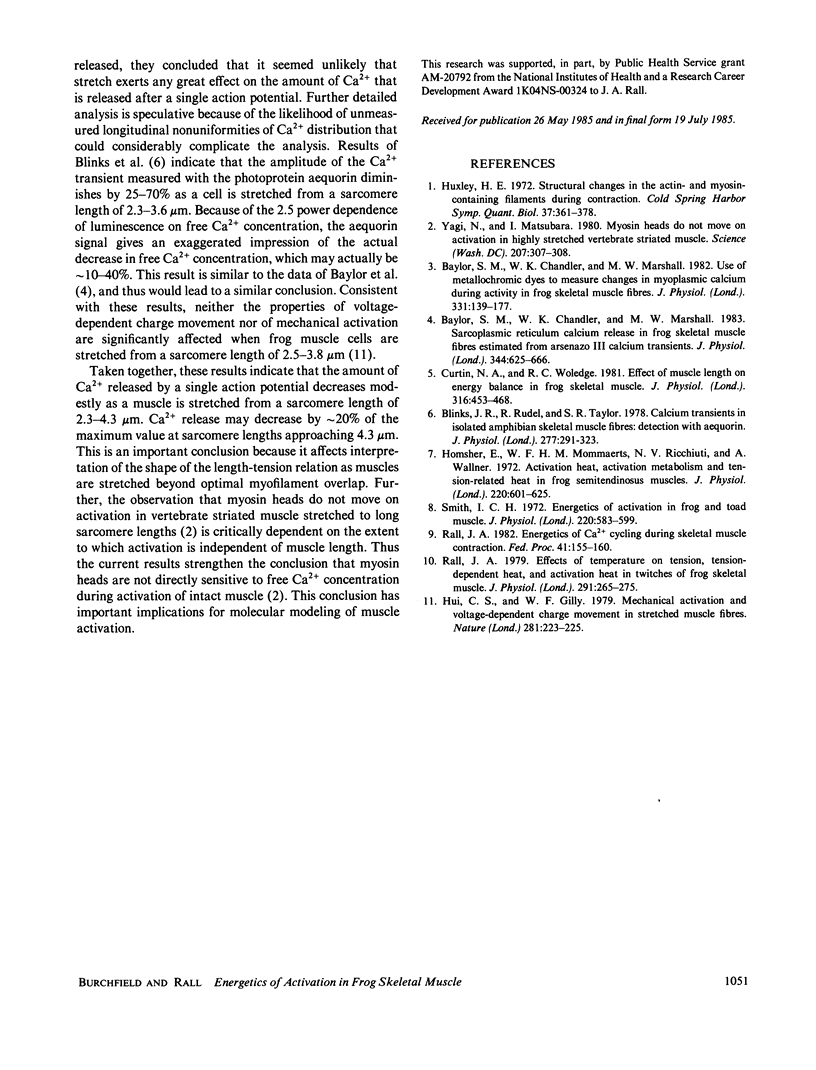Abstract
Experiments were designed to gain information about the effects of extremely long sarcomere lengths (greater than 3.8 microns) on muscle activation. The amount of energy liberated in an isometric twitch by muscles stretched to sarcomere lengths where myofilament overlap is vanishingly small (greater than 3.6 microns) is thought to be an indirect measure of the Ca2+ cycled during contraction. The effects of altering sarcomere length from 3.8 to 4.3 microns on the amount of Ca2+ cycled was measured using twitch energy liberation as an indicator of the Ca2+ cycled. Twitch energy liberation decreased by approximately 20% over this sarcomere length region, suggesting that the amount of Ca2+ released by a single action potential is not altered dramatically when a muscle is stretched to extreme lengths.
Full text
PDF


Selected References
These references are in PubMed. This may not be the complete list of references from this article.
- Baylor S. M., Chandler W. K., Marshall M. W. Sarcoplasmic reticulum calcium release in frog skeletal muscle fibres estimated from Arsenazo III calcium transients. J Physiol. 1983 Nov;344:625–666. doi: 10.1113/jphysiol.1983.sp014959. [DOI] [PMC free article] [PubMed] [Google Scholar]
- Baylor S. M., Chandler W. K., Marshall M. W. Use of metallochromic dyes to measure changes in myoplasmic calcium during activity in frog skeletal muscle fibres. J Physiol. 1982 Oct;331:139–177. doi: 10.1113/jphysiol.1982.sp014368. [DOI] [PMC free article] [PubMed] [Google Scholar]
- Blinks J. R., Rüdel R., Taylor S. R. Calcium transients in isolated amphibian skeletal muscle fibres: detection with aequorin. J Physiol. 1978 Apr;277:291–323. doi: 10.1113/jphysiol.1978.sp012273. [DOI] [PMC free article] [PubMed] [Google Scholar]
- Curtin N. A., Woledge R. C. Effect of muscle length on energy balance in frog skeletal muscle. J Physiol. 1981 Jul;316:453–468. doi: 10.1113/jphysiol.1981.sp013800. [DOI] [PMC free article] [PubMed] [Google Scholar]
- Homsher E., Mommaerts W. F., Ricchiuti N. V., Wallner A. Activation heat, activation metabolism and tension-related heat in frog semitendinosus muscles. J Physiol. 1972 Feb;220(3):601–625. doi: 10.1113/jphysiol.1972.sp009725. [DOI] [PMC free article] [PubMed] [Google Scholar]
- Hui C. S., Gilly W. F. Mechanical activation and voltage-dependent charge movement in stretched muscle fibres. Nature. 1979 Sep 20;281(5728):223–225. doi: 10.1038/281223a0. [DOI] [PubMed] [Google Scholar]
- Rall J. A. Effects of temperature on tension, tension-dependent heat, and activation heat in twitches of frog skeletal muscle. J Physiol. 1979 Jun;291:265–275. doi: 10.1113/jphysiol.1979.sp012811. [DOI] [PMC free article] [PubMed] [Google Scholar]
- Rall J. A. Energetics of Ca2+ cycling during skeletal muscle contraction. Fed Proc. 1982 Feb;41(2):155–160. [PubMed] [Google Scholar]
- Yagi N., Matsubara I. Myosin heads do not move on activation in highly stretched vertebrate striated muscle. Science. 1980 Jan 18;207(4428):307–308. doi: 10.1126/science.6444254. [DOI] [PubMed] [Google Scholar]


